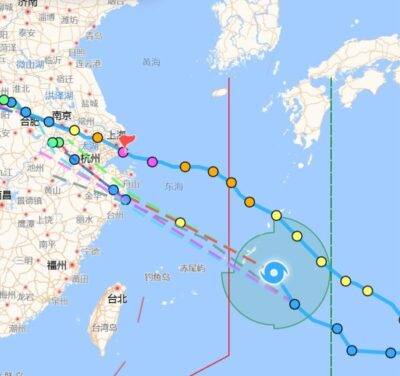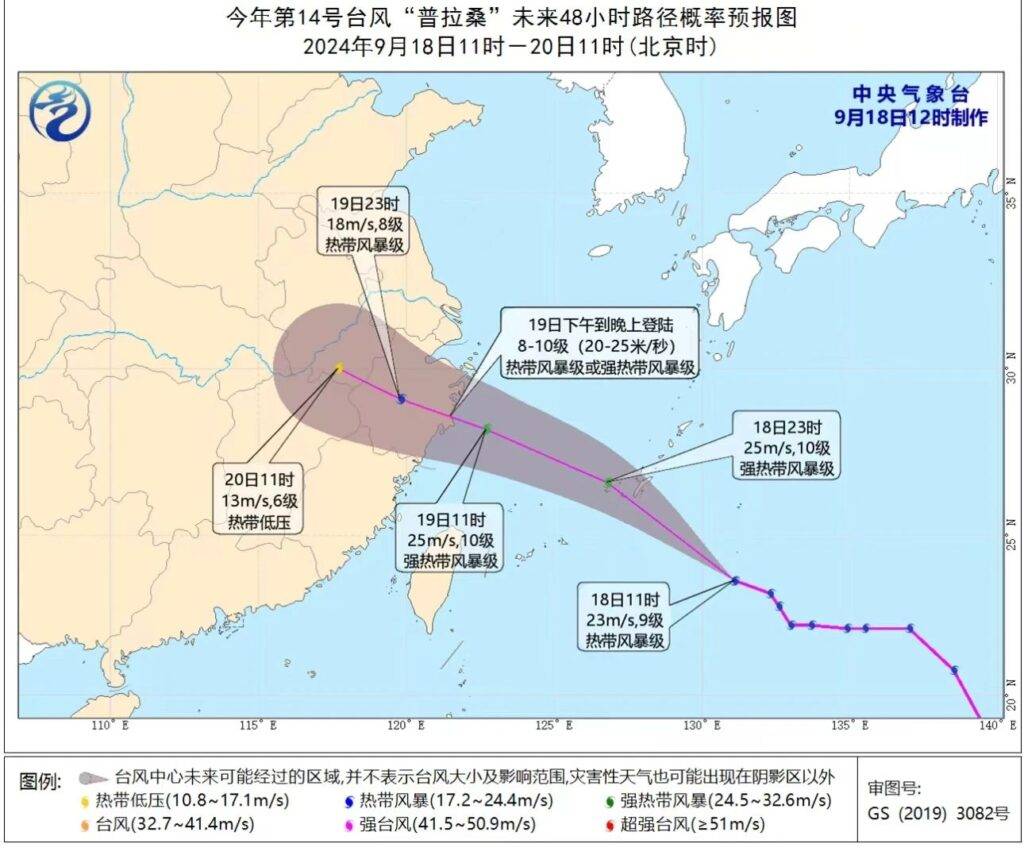
As Typhoon Pulasan approaches the East Sea waters, residents of East China are bracing for strong winds and scattered showers.
The typhoon, which is expected to make landfall in Zhejiang’s coastal areas between Yuhuan and Xiangshan on Thursday night, has prompted local authorities to issue a blue typhoon alert and activate a level-4 emergency response.
Understanding Typhoon Pulasan
Typhoon Pulasan, currently situated 570 kilometers southeast of the Ryukyu Islands, is moving northwest at a speed of 45 kilometers per hour.

With wind speeds around its eye reaching up to 83 kilometers per hour, the typhoon is expected to bring significant weather changes to the region.
Weather Forecast and Precautions
The National Meteorological Center has forecasted that temperatures will fluctuate between 26 and 31 degrees Celsius from Thursday to Saturday, with a drop to between 24 and 27 degrees on Sunday.
As the typhoon approaches, residents can expect strong winds and scattered showers, which may lead to localized flooding and disruptions.
Local authorities have urged residents to stay indoors and secure any loose objects that could be blown away by the strong winds.
Additionally, they have advised people to avoid coastal areas and refrain from any outdoor activities during the typhoon’s peak.
Impact on Daily Life
The impending typhoon is likely to affect daily life in several ways. Public transportation services may be disrupted, and flights could be delayed or canceled. Schools and businesses might also close temporarily to ensure the safety of students and employees.
Residents are advised to stock up on essential supplies such as food, water, and medications. It’s also important to have a battery-powered radio, flashlights, and extra batteries on hand in case of power outages.
Emergency Response and Preparedness
The local flood control department has activated a level-4 emergency response, the lowest in its four-tier system, to ensure that relevant departments are fully prepared for the typhoon season.
This includes monitoring water levels, reinforcing flood defenses, and coordinating with emergency services to respond quickly to any incidents.
Historical Context
Typhoons are not uncommon in this region, and residents are generally well-prepared for such events. However, each typhoon brings its own set of challenges and potential hazards.
In recent years, advancements in meteorological technology have improved the accuracy of weather forecasts, allowing for better preparation and response.
Conclusion
As Typhoon Pulasan approaches, it’s crucial for residents to stay informed and take necessary precautions to ensure their safety.
By following the advice of local authorities and being prepared for potential disruptions, the community can weather the storm with minimal impact.
Stay safe, stay informed, and take care of each other during this challenging time.


